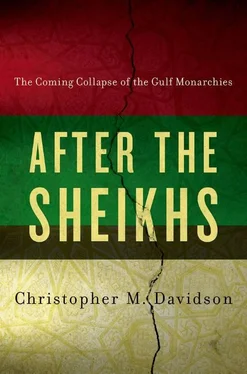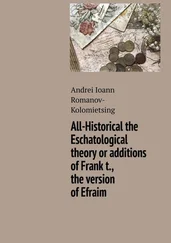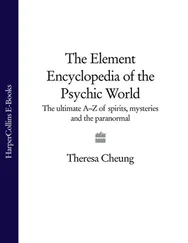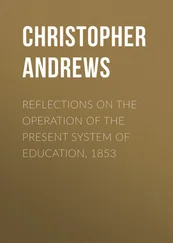The other Trucial States, much smaller, existed alongside Abu Dhabi, Dubai, Ra’s al-Khaimah, and Sharjah. Some were short-lived, being temporary British-recognised breakaways from their larger neighbours before eventually being reabsorbed as Britain lost interest. Nevertheless, by the beginning of the twentieth century, a number of distinct ruling families had managed to solidify their control of such territories. Ajman and Umm al-Qawain, sandwiched between Sharjah and Ra’s al-Khaimah, were ruled respectively by the Al-Nuaimi and Al-Mualla families. While Hamriyyah, also along the lower Gulf coastline, was ruled by the Al-Shamsi tribe, and Dibba, on the Indian Ocean coastline, was ruled by another branch of the Al-Qasimi.
Further down the Indian Ocean coastline, the port city of Muscat had been controlled interchangeably by the Portuguese, the Ottoman Empire, and Persian governors until Abu Hilal Ahmed bin Said was elected as Imam of Muscat in 1744 following the final expulsion of Persian influences. Consolidating his hold over other parts of Oman, Ahmad had effectively founded the Al-Said dynasty, which, under his second successor — Sultan Said bin Sultan Al-Said — assembled a slave-trading empire in the early nineteenth century stretching from the island of Zanzibar off the east coast of Africa to Gwadar, in present day Pakistan. However, following Britain’s outlawing of slavery in 1833 the Al-Said’s revenues began to decline, as much of Oman’s trade was with British colonies. And in 1856, following Sultan’s death and a subsequent succession struggle within the family, British mediators intervened, effectively separating the Sultanates of Muscat and Zanzibar in 1861. In 1871 the Al-Said dynasty was again re-shaped by British interests, with London becoming concerned that Sultan’s Muscat-based successor, Azzam bin Qais Al-Said, was becoming too powerful after uniting tribes from the interior. Funding his main rival, Turki bin Said Al-Said, Azzam soon lost the struggle, and Turki manoeuvred Oman into a much closer relationship with Britain, with his successors signing a treaty of friendship in 1908. [74] 18. See Valeri, Marc, ‘Oman’ in Davidson (2011).
Britain and the early order
The origins of all the Gulf monarchies were thus to some degree moulded by British interests, or in some cases disinterest. The ruling dynasties of the Trucial States were direct creations, while Kuwait’s Al-Sabah and Oman’s Al-Said owed much of their survival to British protection. Meanwhile the Al-Saud benefited from the power vacuum in central Arabia resulting from the weakness of the British-backed Emir of Mecca. One of the most important aspects of Britain’s control over the region was the political support provided to specific families. This was especially evident in the Trucial States, where the various peace treaties provided rulers with protection from external and internal threats — including rival families and tribes inhabiting the same territory. Moreover, the documents all included clauses requiring the rulers to sign on behalf of their ‘future heirs’, [75] 19. See Davidson, Christopher M., The United Arab Emirates: A Study in Survival (Boulder: Lynne Rienner, 2005), pp. 30–31; Gause, Gregory F. Oil Monarchies: Domestic and Security Challenges in the Arab Gulf States (New York: Council on Foreign Relations Press, 1994), p. 22.
thus guaranteeing further British support for their dynasties.
By the beginning of the twentieth century Britain’s position became even clearer, with the Viceroy of India [76] 20. Lord George Curzon.
remarking in 1903 that ‘…if [internal disputes] occurred, the sheikhs would always find a friend in the British Resident, who would use his influence as he had frequently done in the past, to prevent these dissensions from coming to a head, and to maintain the status quo’. [77] 21. Al-Sagri, Saleh Hamad, ‘Britain and the Arab Emirates, 1820–1956’ (PhD thesis. University of Kent at Canterbury, 1988), p. 70.
Similarly, in the late 1920s, following a series of fratricides in the region, [78] 22. Most notably the fratricides among the sons of Abu Dhabi’s Zayed bin Khalifa Al-Nahyan.
the Political Resident called for an even stronger British position, claiming that ‘Unless and until [the British] are prepared to interfere much more than they have done in the past, and are prepared, if necessary, to bolster up a weak sheikh, however much they might regret it, the only other course will be to continue shaking hands with successful murderers.’ [79] 23. Al-Sagri, p. 97.
In parallel to this protection, most of the Gulf monarchies were obliged to cede much of their control over foreign policy to Britain. Again, the Trucial States provide the best example, as although they remained ‘independent Arab sheikhs in special relations with His Majesty’s Government’ [80] 24. Ibid., p. 92.
and had transferred no territorial sovereignty to Britain, [81] 25. Ibid., p. 51.
they were nonetheless required to sign collectively an ‘exclusivity treaty’ in 1892. Three clauses were included, forbidding the rulers from entering into agreements with non-British parties, from allowing non-British parties to visit their territories, and from selling or mortgaging any part of the territories unless it was to British agents. [82] 26. Lorimer, John G., Gazetteer of the Persian Gulf, Oman, and Central Arabia (London: Gregg International Publishers, 1970), pp. 1450–1451.
In practice, the clauses helped Britain thwart other European powers from gaining a foothold in the Persian Gulf, especially France which had been trying to increase its influence in Oman, and Germany which had begun to construct the Baghdad railway. [83] 27. Al-Sagri, p. 64.
Also helping Britain to keep the Gulf monarchies, or at least the Trucial States, within a dependent and sustainable relationship were the new economic structures that began to form, especially in the early twentieth century. Having previously relied on animal husbandry, basic re-export trading and — in the coastal towns — fishing and pearl diving, the various sheikhdoms began to move away from mere subsistence activities in the 1920s, with Britain seeking to channel large sums of ‘locational rent’ [84] 28. Locational rent being a form of economic rent which is created by spatial variation or the location of a resource. The concept was put forward in the 1820s by Johann Heinrich von Thünen. See Von Thünen, Johann Heinrich, The Isolated State (1826). In this case, the sheikhdoms’ location en route to India and the suspected oil reserves in their territories.
to most of the ruling families with whom it had entered into protection agreements. In particular, rent was provided in return for landing rights for British aircraft en route from Europe to India and the maintenance of British-built airbases in their territories. After building military airbases in Salalah in southern Oman and on the Omani island of Masirah, [85] 29. Buxani, Ram, Taking the High Road (Dubai: Motivate, 2003), p. 84.
a base was also established in Sharjah, [86] 30. India Office R/515/4; Abdullah, Muhammad Morsy, The United Arab Emirates: A Modern History (London: Croom Helm, 1978), p. 56.
and in the early 1930s agreements were signed with both Sharjah and Dubai to allow civilian aircraft to land. [87] 31. Wilson, Graeme, Rashid’s Legacy: The Genesis of the Maktoum Family and the History of Dubai (Dubai: Media Prima, 2006), p. 72. In the latter case Imperial Airways was allowed to land flying boats in between buoys on the Dubai creek.
Similarly, oil, or rather oil exploration concessions, provided another means of channelling rent directly to the ruling families. In 1922 fresh agreements between most of the Gulf’s rulers and Britain required the former to eschew any oil concessions that were not supported by the British government. [88] 32. Most notably American Standard Oil of New Jersey. Foreign Office 371/19975.
And in 1935, after sizeable oil discoveries had already been made in Kuwait and Bahrain, the London-based and British Government-backed Iraqi Petroleum Company (IPC) [89] 33. The Iraqi Petroleum Company was 51 per cent owned by the British Government. Foreign Office 371/19975.
formed a wholly owned subsidiary, Petroleum Concessions Ltd., which was to be the sole operator of concessions for all of Britain’s Gulf protectorates. [90] 34. Petroleum Concessions Ltd. was dominated by British Petroleum. See Hawley, Donald, The Emirates: Witness to a Metamorphosis (Norwich: Michael Russell, 2007), p. 67; Heard-Bey, Frauke, From Trucial States to United Arab Emirates (London: Longman, 1996), p. 295; and, ( in Arabic ) Al-Otaibi, Manna Said, Petroleum and the Economy of the United Arab Emirates (Kuwait: Al-Qabas Press, 1977), p. 45.
Unsurprisingly, a British ultimatum was then issued, binding the rulers to deal only with Petroleum Concessions. [91] 35. Al-Otaibi (1977), p. 155.
By the late 1930s, the concessions were providing a very high stream of income for the ruling families, even in those territories where oil had not yet been discovered, a good example being the 1937 concession signed by IPC with the ruler of Dubai. Even though oil was not discovered in the sheikhdom until thirty years later, [92] 36. The first oil discoveries in Dubai were made in 1966 at the Fateh offshore field. See Butt, Gerald, ‘Oil and Gas’ in Al-Abed, Ibrahim and Hellyer, Peter (eds.), The United Arab Emirates: A New Perspective (London: Trident, 2001).
the ruler nonetheless received an ‘advance’ lump sum of 60,000 rupees, and was given an annual income of 30,000 rupees. Moreover, he was promised a 200,000 rupee payment upon the discovery of oil, and a further three rupees for each barrel extracted during the prospecting process. [93] 37. India Office l/P/S/18/B/458; Abdullah (1978), p. 70; Wilson (2006), p. 68.
Читать дальше












